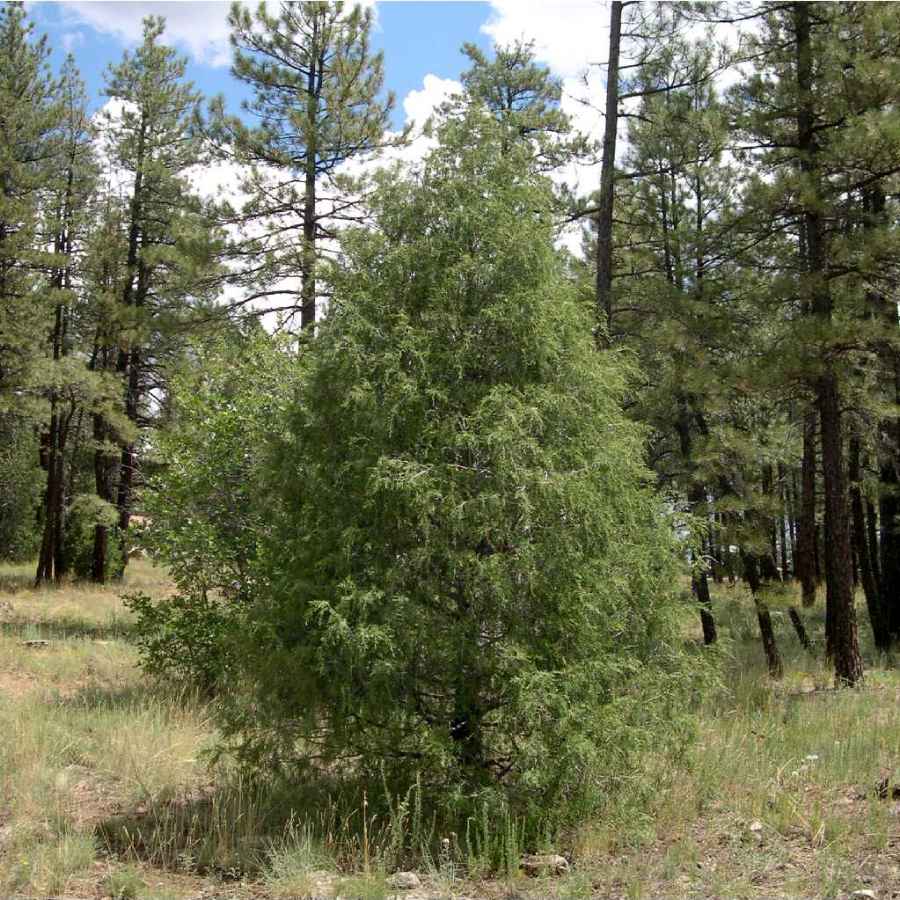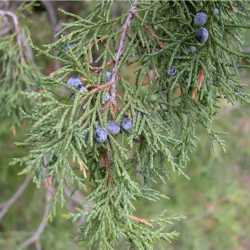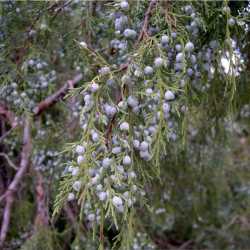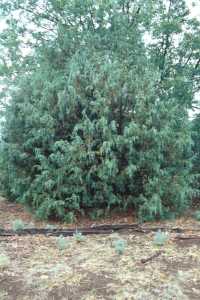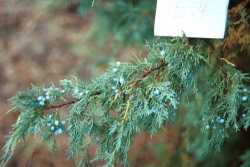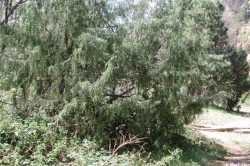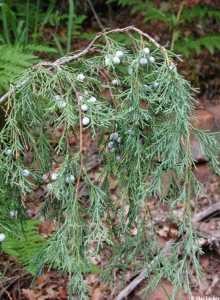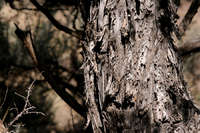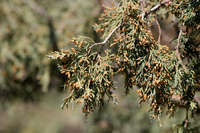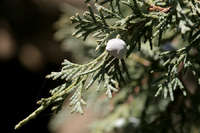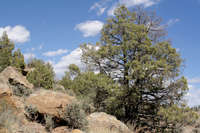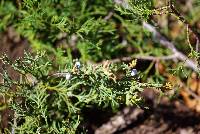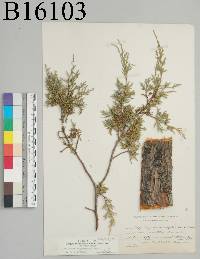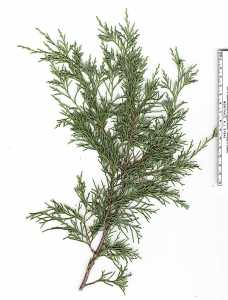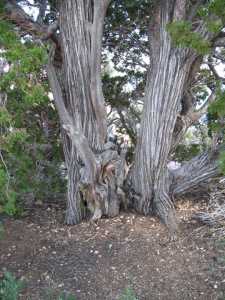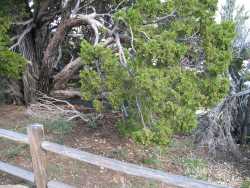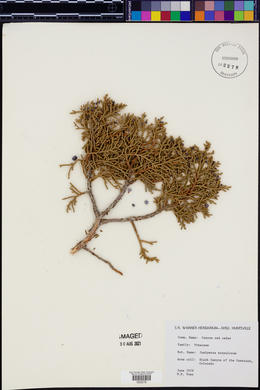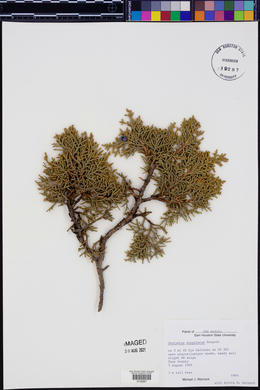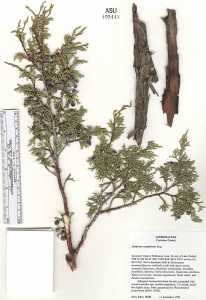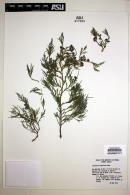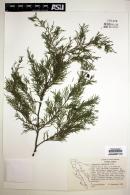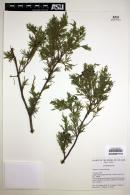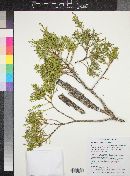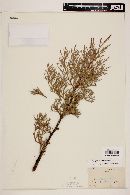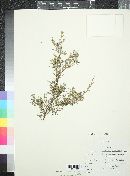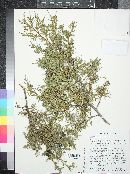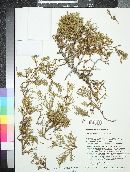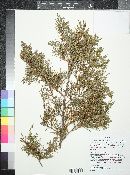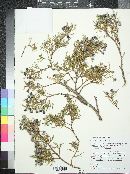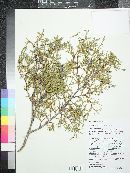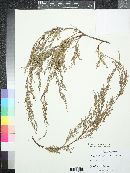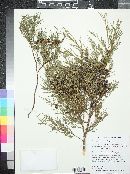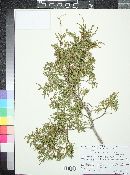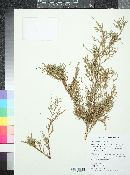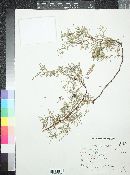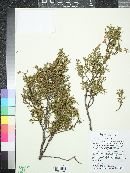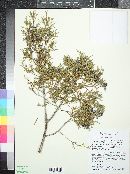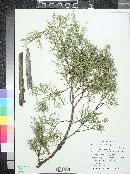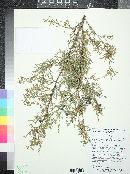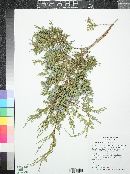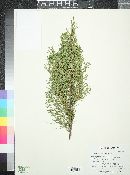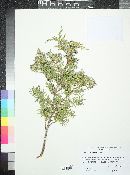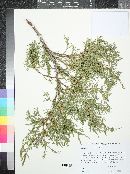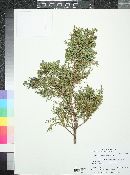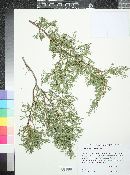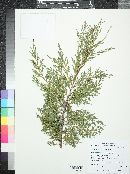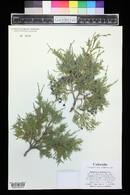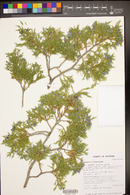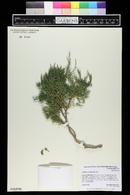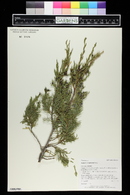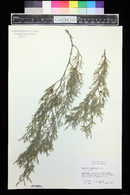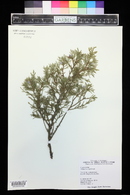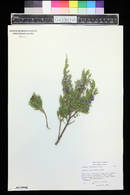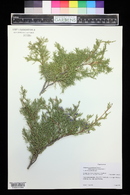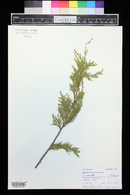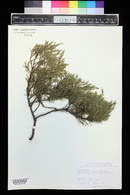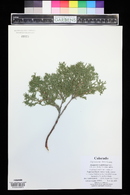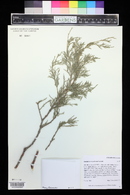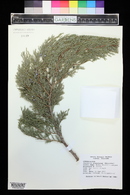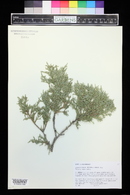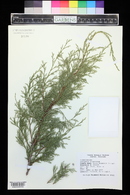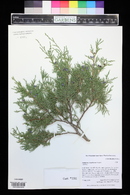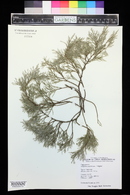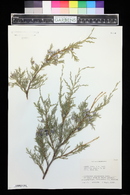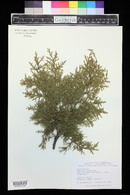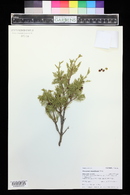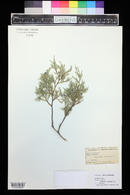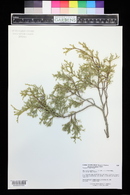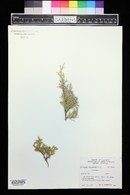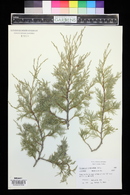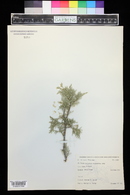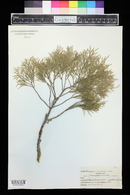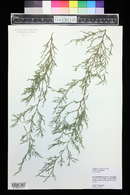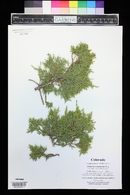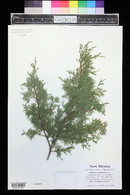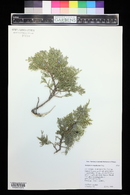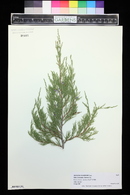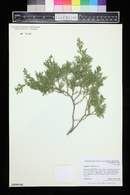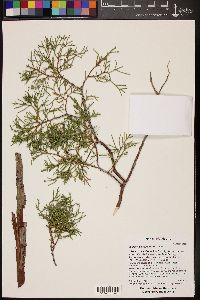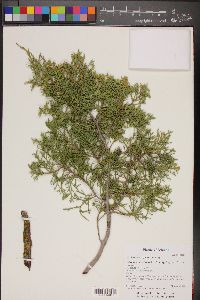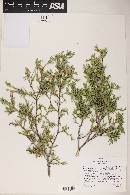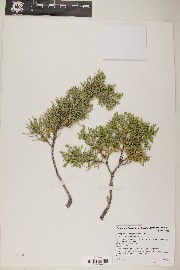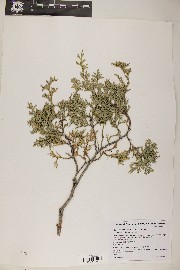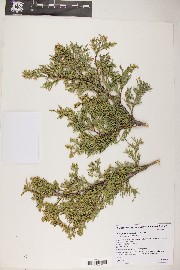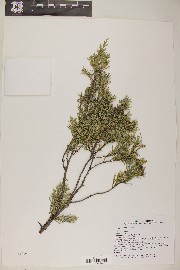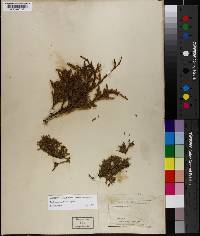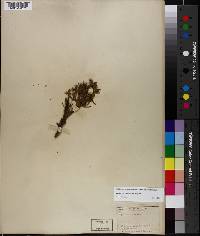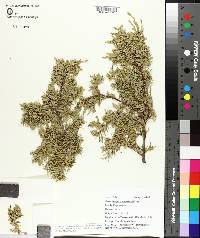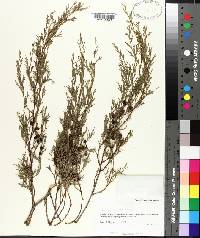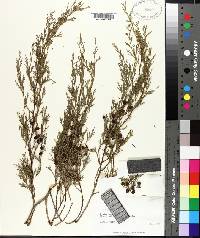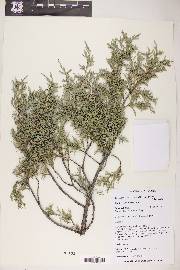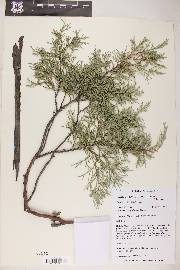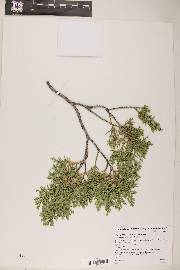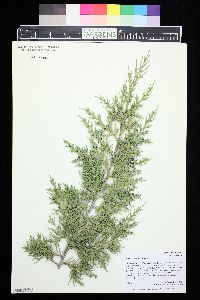Juniperus scopulorum
|
|
|
|
Family: Cupressaceae
Rocky Mountain Juniper, more... (es: sabino)
[Juniperus fassettii A. Boivin, moreJuniperus scopulorum var. columnaris Fassett, Juniperus virginiana subsp. scopulorum (Sarg.) E. Murr., Juniperus virginiana var. montana Vasey, Juniperus virginiana var. scopulorum (Sarg.) Lemmon, Sabina scopulorum (Sarg.) Rydb.] |
Trees dioecious, to 20 m, single-stemmed (rarely multistemmed); crown conic to occasionally rounded. Bark brown, exfoliating in thin strips, that of small branchlets (5--10 mm diam.) smooth, that of larger branchlets exfoliating in plates. Branches spreading to ascending; branchlets erect to flaccid, 3--4-sided in cross section, ca. 2/3 or less as wide as length of scalelike leaves. Leaves light to dark green but often glaucous blue or blue-gray, abaxial gland elliptic, conspicuous, exudate absent, margins entire (at 20´ and 40´); whip leaves 3--6 mm, not glaucous adaxially; scalelike leaves 1--3 mm, not overlapping to overlapping by not more than 1/5 their length, keeled to rounded, apex obtuse to acute, appressed or spreading. Seed cones maturing in 2 years, of 2 distinct sizes, generally with straight peduncles, globose to 2-lobed, 6--9 mm, appearing light blue when heavily glaucous, but dark blue-black beneath glaucous coating when mature (or tan beneath glaucous coating when immature), resinous to fibrous, with (1--)2(--3) seeds. Seeds 4--5 mm. 2 n = 22. Rocky soils, slopes, and eroded hillsides; 1200--2700 m (0 m at Vancouver Island and Puget Sound); Alta., B.C.; Ariz., Colo., Idaho, Mont., Nebr., Nev., N.Mex., N.Dak., Oreg., S.Dak., Utah, Wash., Wyo.; n Mexico. Juniperus scopulorum hybridizes with its eastern relative J . virginiana in zones of contact in the Missouri River basin (C. W. Comer et al. 1982) and with J . horizontalis ( J . ´ fassettii Boivin; N. C. Fassett 1945). Relictual hybridization with J . virginiana is known in the Texas panhandle (R. P. Adams 1983).
Plant: tree; 5-20 m; dioecious; bark dark red-brown weathering grayish, scaly, furrowed Leaves: decussate, closely appressed, scale-like; gland obscure; margin entire under magnification, sometimes hyaline Cones: POLLEN CONES terminal, about 2 mm long, oblong; SEED CONES terminal, (4)6-9 mm, spheric to ovoid, green with bloom, maturing blue-black usually with waxy white bloom in second year, usually resinous to sweet Fruit: SEEDS (1-)2(-3) per cone, 4-5 mm long, pointed, grooved, angled, light brown Misc: Canyon bottoms or mountains; juniper or conifer woodland, ponderosa pine forest, grassland, montane riparian; 1100-2750 m; (3600-9000 ft); Apr-Jun REFERENCES: Bartel, Jim A. 1994. Cupressaceae. J. Ariz. - Nev. Acad. Sci. Volume 27, 195-200. Bartel 1993, Martin and Hutchins 1980 Common Name: Rocky Mountain juniper Duration: Perennial Nativity: Native Lifeform: Tree General: Tree 5-20 m tall, dioecious with dark red-brown bark, weathering grayish, scaly, furrowed; crown irregularly spreading to pyramidal. Needles: Decussate, closely appressed, scale-like, obscure gland, margin entire under magnification, sometimes hyaline. Cones: Pollen cones terminal, about 2 mm long, oblong; seed cones terminal, 6-9 mm, spheric to ovoid, green with bloom, maturing blue-black usually with waxy white bloom in second year, usually resinous to sweet. Seeds: Usually 2 per cone, 4-5 mm long, pointed, grooved, angled, light brown. Ecology: Found in canyon bottoms, often on dry, and rocky slopes from 3500-9000 ft (1067-2743 m); flowers April-June. Notes: Distinctive in cooler canyon bottom sites with its drooping branch tips and bluish-green color. Ethnobotany: Used to prevent vomiting, for arthritis and rheumatism, for colds, coughing, for fevers, to help promote delivery, for pneumonia, as a sedative, for sore throat, diarrhea, to stop hemorrhages, for cleansing and healing after birth, and it was used ceremonially. Etymology: Juniperus is the Latin name for juniper, while scopulorum means growing on cliff, or projecting rocks. Synonyms: Juniperus scopulorum var. columnaris, Juniperus virginiana subsp. scopulorum, Juniperus virginiana var. montana, Juniperus virginiana var. scopulorum, Sabina scopulorum Editor: SBuckley, 2010 |
|
|
|

